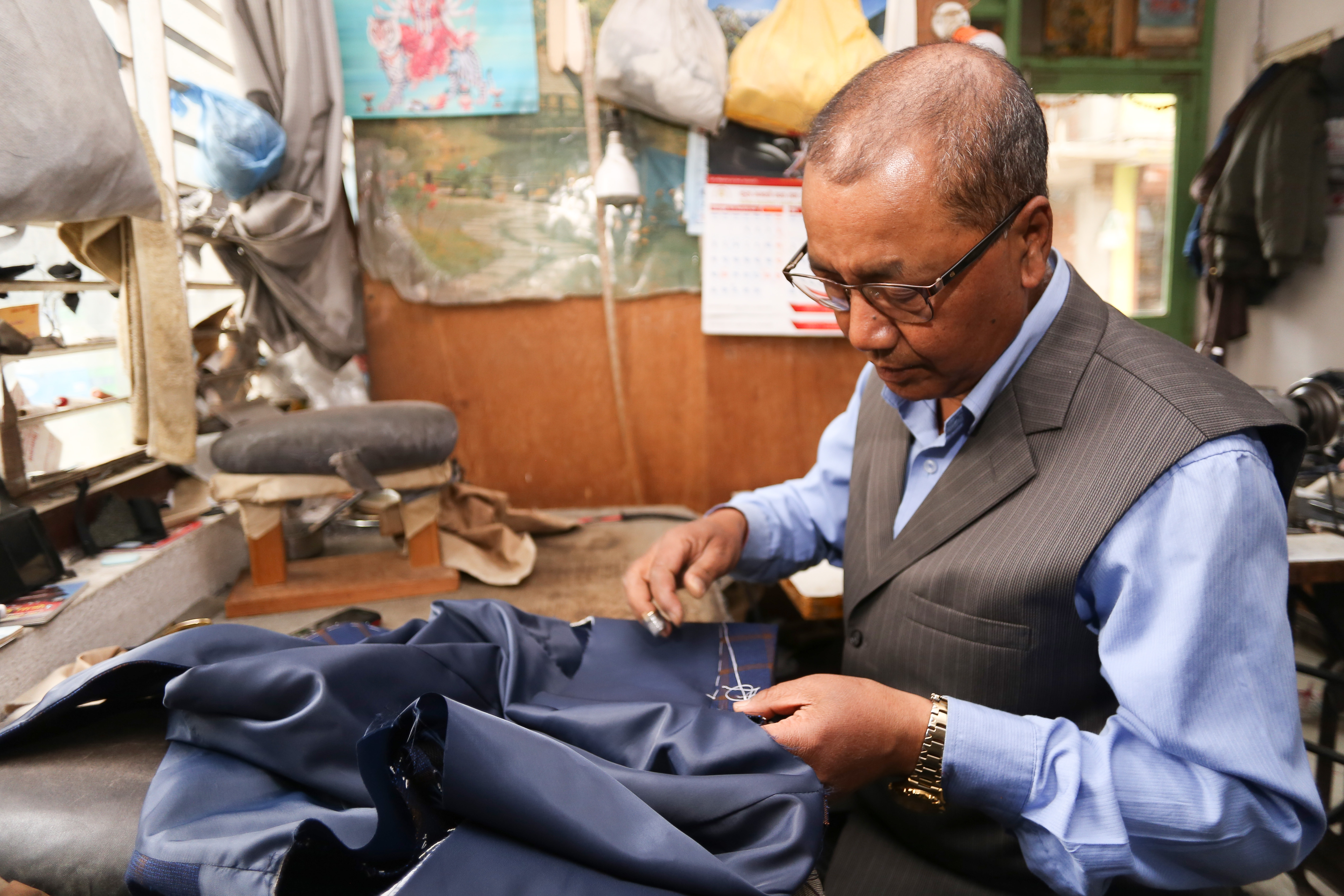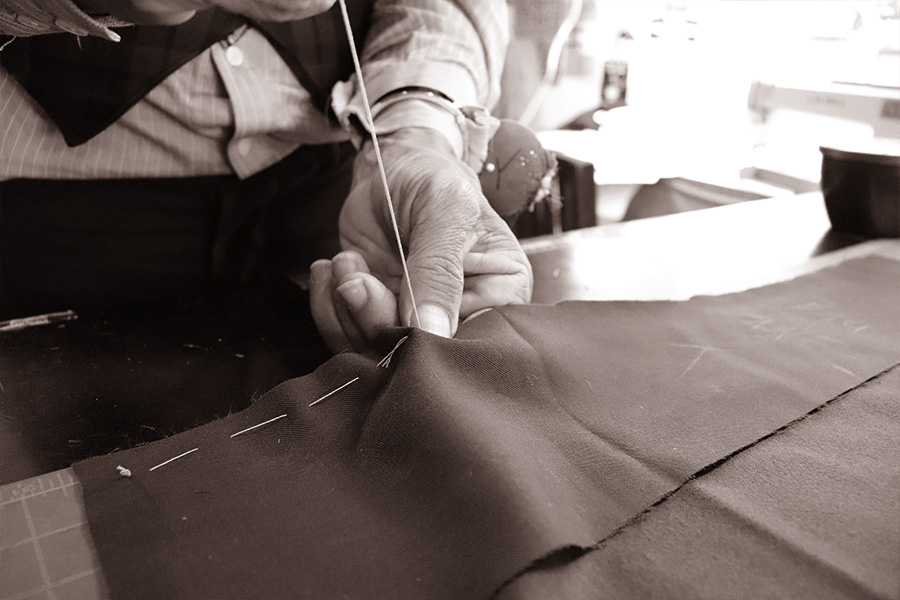Tailor Perth Professionals: Boost Your Fashion with Custom Tailoring
Recognizing the Tailoring Refine: From Material Selection to Final Fitting for the Suitable Wardrobe
The tailoring procedure is a complex interaction of art and science, beginning with the critical choice of textile choice and finishing in the accurate modifications of last installations. Each fabric kind brings one-of-a-kind top qualities that influence not just the visual charm yet also the garment's longevity and viability for various celebrations.
Value of Textile Option
Choosing the appropriate fabric is important in the customizing procedure, as it directly influences the convenience, durability, and general visual of the last garment (tailor perth). The choice of fabric establishes the foundation for the garment's design, functionality, and efficiency. Different materials have special residential properties, such as breathability, weight, and stretch, which can substantially influence just how the garment drapes and fits the body
Moreover, fabric choice affects the garment's durability and simplicity of treatment. High-grade fabrics can hold up against deterioration, keeping their appearance and structure over time, while lower-quality materials may cause pilling or fading. Additionally, the right fabric adds to the garment's capacity to change across periods and celebrations, thereby boosting flexibility.
A customized piece made from a proper fabric not just showcases craftsmanship yet likewise boosts the user's confidence. Consequently, understanding the subtleties of fabric choice is critical for any customizing undertaking. It makes certain that the end product not just meets the aesthetic needs of the customer however likewise aligns with useful demands, thus attaining a harmonious balance in between kind and feature in the tailored wardrobe.
Sorts Of Fabrics and Their Usages
Comprehending the different types of fabrics readily available is crucial for making notified choices during the customizing process. Each fabric has unique characteristics that dictate its viability for certain garments and celebrations.
Cotton, recognized for its breathability and gentleness, is perfect for casual wear and summer apparel. Its convenience allows it to be tailored into everything from t-shirts to dresses. Wool, on the various other hand, is preferred for its warmth and framework, making it a superb option for official suits and outerwear - tailor perth. Its natural elasticity aids garments preserve shape with time.
Silk radiates luxury and is light-weight, making it best for eveningwear and delicate shirts; however, it needs cautious handling as a result of its fragility. Linen, with its distinctive coating, is a popular choice for cozy environments, providing a crisp and airy feeling, however it wrinkles easily, which might influence the garment's look.
Synthetic materials, such as polyester and nylon, offer resilience and resistance to wrinkles, making them ideal for everyday wear and active garments. Recognizing these material types and their buildings permits far better decision-making, making certain that each customized piece not just fits well but likewise straightens with the desired objective and event.
The Tailoring Strategies Explained
The art of tailoring depends on a range of techniques that change fabric right into well-fitted garments. Central to this procedure is pattern preparing, where a dressmaker develops templates based on the customer's dimensions and desired style. This initial action makes sure that the garment will fit the wearer appropriately before any kind of reducing happens.
As soon as patterns are developed, reducing strategies enter into play. Accuracy is paramount as mistakes can lead to misfitting garments. Tailors commonly utilize various reducing methods, such as single-layer cutting for detailed designs and multiple-layer reducing for performance on conventional patterns.
Basting is an additional crucial strategy, permitting tailors to temporarily stitch fabric items with each other for an initial fitting. This method offers the possibility to examine the drape and total shape prior to final sewing.
Seaming methods, consisting of french joints and flat-felled seams, improve the garment's resilience read here and aesthetic appeal. Tailors also use strategies such as interfacing and padding to provide framework and form to certain locations, like collars and shoulders.
Last but not least, completing techniques, including hemming and edge completing, ensure the garment's longevity while supplying a refined appearance. Together, these techniques form the foundation of reliable customizing, causing beautiful, custom-fit garments.
Fitting Changes and Factors To Consider

Key considerations include the shoulder fit, which ought to neither droop neither limit movement, and the sleeve length, which should permit for comfy arm motion while keeping a sleek look. Furthermore, modifications at the waist can refine the silhouette, with alternatives to allow out or take in material as needed.
The increase of pants is one more critical element; it ought to sit pleasantly over the hips without causing discomfort, permitting simplicity of activity. Hemming lengths for both pants and skirts need to show the user's recommended style while appreciating percentages.

Maintaining Your Tailored Clothes
Constantly follow the care label directions, which might advise completely dry cleaning for delicate fabrics or maker washing for even more sturdy materials. Avoid constant laundering, as this can put on down the fabric and alter the garment's form.
Storage is similarly vital; usage cushioned wall mounts for coats and coats to preserve shoulder framework, and shop pants folded up neatly or hung to stop creasing. Safeguard garments from straight sunshine, which can discolor shades and damage fibers.
Furthermore, regular evaluations for small repair work can prevent bigger issues. Look for loosened switches, tearing joints, or signs of moth damage, addressing these troubles quickly to keep the garment's integrity.
Lastly, think about seasonal turning. Wearing tailored items in moderation permits textiles to recoup, prolonging their life-span. By carrying out these upkeep methods, you can make certain that your customized garments stay as beautiful as the day you initially wore them, boosting your perfect wardrobe for several years ahead.
Verdict
The customizing process, encompassing textile option, competent techniques, and exact suitable modifications, plays an important role in developing garments that boost both convenience and design. Each stage adds to the general effectiveness of the end product, making sure that garments not only fits well however additionally mirrors specific identification. Furthermore, recognizing the significance of maintenance extends the life of tailored garments, strengthening their value in a well-curated closet. A detailed strategy to tailoring finishes in a sleek and positive look.
Choosing the appropriate material is crucial in the customizing procedure, as it directly influences the comfort, sturdiness, and general visual of the final garment. The choice of material sets the foundation for the garment's capability, efficiency, and style. Different fabrics possess distinct residential properties, such as breathability, weight, and stretch, which can dramatically impact exactly how the garment drapes and fits the body.
The art of customizing counts on a selection of techniques that transform textile right into well-fitted garments.The customizing procedure, encompassing fabric choice, competent techniques, and specific fitting modifications, plays an essential function in creating garments that enhance both comfort and design.